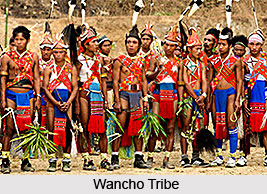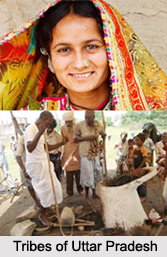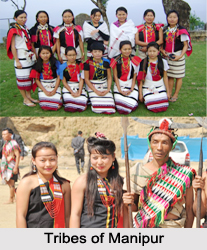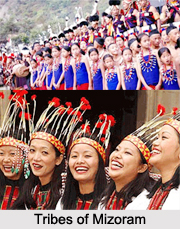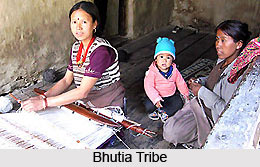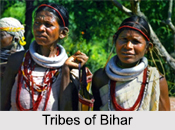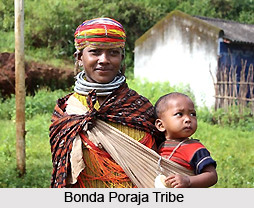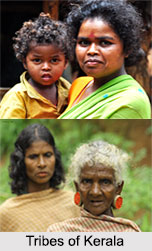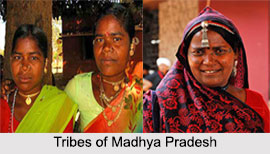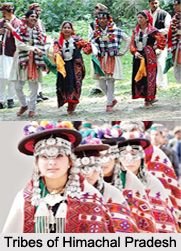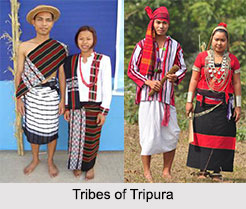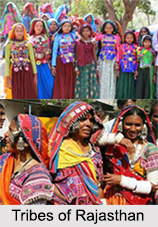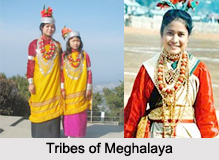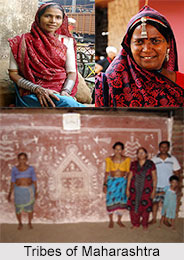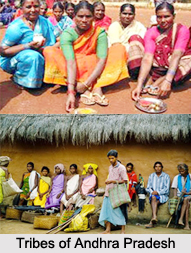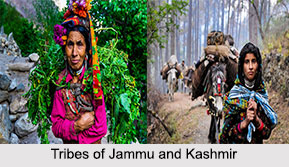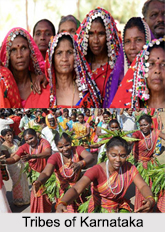Batauli, an important festival of the Munda Tribe, is celebrated before the re-ploughing and Kara (levelling) operations begin. The villagers approach the Pahan who fixes a particular date and time that is later announced to the villagers. The festival, observed in the month of Bhado i.e. during August, is celebrated to protect and safeguard the villagers from snakes and tigers.
It is customary to sacrifice three fowls during Batauli. These three fowls must be of three different colours, meant for three different bongas. The white fowl is for Singbonga, red for Desauli and grey one for Jaer Buria. One day prior to the sacrifice the fowls are kept fasting and before being sacrificed they are given arwa rice to eat. It is believed by the Mundas that the more they consume rice, the more it is auspicious for the feast. As it is forbidden to weed and re-plough the land before the festival, the villagers, on the festive day of the feast proper assemble in a field nearby. The Pahan presiding over the festival observes fast for one day and purifies himself by bathing in a nearby stream.
On the festive day the Pahan is assisted by his assistant Pujar who carries with him the sacrificial fowls. A patch of land selected by the Pahan is cleared and plastered with cow dung. The branches of the Soso or the Tiril tree regarded as auspicious are used in the festival. The soso works as a guard against the evil eyes while the tiril acts as a protection against the devastating rays of the sun believed to be fatal for the growing rice. After the collection of the branches the Pahan places the rice in three heaps and upon feeding the red fowl with some rice he sacrifices it pronouncing the following hymn.
"Henetalen, Dasauli, Haraburu, candi caora, Nage era, Bindi era, ariren cimirenko, diriatal, Sakamsororenko, apemiad, gandumiad, Calpare dubtan jarutanko, tisindo batauli, Negrea ain omapetan cadapelna, jomepe, mupe, heredre tusanre sahaure, skamre kula boton banoka, binboson banoka, Kotagiri kope, teogiri kope, nemte daramte."
After beheading the fowl he allows some blood to drop on one heap of the rice. The grey fowl is sacrificed in the same way and finally the white fowl is sacrificed to Singbonga requesting him to instruct the bongas under his sway to prevent them from causing any harm. The Pahan then drops the blood of the fowl on the third heap of rice.
The Pahan upon completing the rituals pours the ritual beer into three leaf cups and offers each of the cup to Desauli, Jaer-buria along with other bongas and then finally to Singbonga. During this period he chants the hymns while offering rice beer to the bongas. The meat of the fowl is the cooke, the head, the liver and the chest are however prepared separately. The Pahan divides the preparation into three parts and offers to the bongas reciting the sacrificial formula
"I have prepared the liver, head and chest of the fowl and offer it to three."
The rest of the portion of the fowl is cooked at the Sarna with rice and Marua sag or gendhari sag that comprise the necessary item of the menu. It is a taboo for the woman and persons who are not khuntkattidars i.e. descendants of the original settlers of the village to partake in the sacrificial meal.
Finally, the Pahan is taken home and the persons who accompany him are offered rice beer at his residence. At night a feast is arranged for the whole village. The festival marks the onset of re-ploughing and weeding. In recent times it has become customary to eat a new vegetable or a new crop especially the leaf of the Marua on this day.
